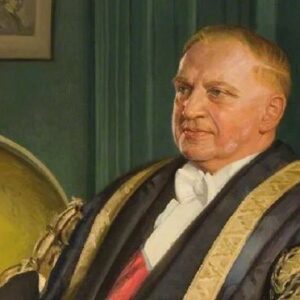In 1947, Sir Edward Victor Appleton, an English scientist, was awarded the Nobel Prize in Physics. During research in the mid-1920s, he identified a layer of the ionosphere that is a reliable reflector of radio waves. Appleton was born in England, the son of a warehouseman, and grew up to be a great student with a wide range of interests. He excelled in physics and mathematics, as well as literature and language study. He was awarded a scholarship to St John’s College, Cambridge, after completing his education. He received first-class honors and began postgraduate work in crystallography right away. However, World War I broke out, interrupting his studies. He returned to his research and began working on radio waves after fighting in the war as a commissioned officer. He was particularly interested in atmospheric physics, and he conducted a series of experiments that confirmed the presence of a layer in the upper atmosphere that became known as the ionosphere. The discovery of the ionosphere and its layers was pivotal in the advancement of radio science. In 1974, the Appleton Laboratory was renamed in his honor at the Radio and Space Research Station.
Childhood and Adolescence
Peter Appleton, a warehouseman, and Mary Wilcock had Edward Victor Appleton on September 6, 1892 in Bradford, West Riding of Yorkshire, England.
Hanson Grammar School was where he acquired his primary education. He did exceptionally well in school and showed a strong interest in science and maths.
He enrolled at the University of London when he was 16 years old. He received a scholarship to St John’s College, Cambridge, after a few years. In 1913, he received a first-class degree in Natural Sciences.
Following his graduation, he undertook postgraduate work in crystallography with Sir Lawrence Bragg, a renowned physicist.
In 1914, World War I broke out, interrupting his studies.
Career of Edward Victor Appleton
During World War I, Edward Victor Appleton became a commissioned officer. He enlisted in the West Riding Regiment before moving on to the Royal Engineers. During his wartime service, he was exposed to radio, a form of communication that was still in its infancy in the military at the time. This piqued his curiosity about radio waves.
In 1920, he became an assistant demonstrator in experimental physics at the Cavendish Laboratory in Cambridge, where he worked after the war. He collaborated with Balthazar van der Pol there, and the two began researching the operation of radio vacuum tubes.
Wheatstone professor of physics at King’s College, University of London, was appointed to him in 1924. He rose to notoriety there for his studies on the propagation of electromagnetic waves, which led to the discovery of an ionosphere layer known as the F layer of ionization. Miles Barnett, a young graduate student from New Zealand, assisted him in his research.
After him and Miles Barnett, the ionosphere layer he discovered was dubbed Appleton–Barnett layer. This layer’s discovery aided in the creation of more dependable long-range radio transmission.
In 1936, he was named Jacksonian Professor of Natural Philosophy at the University of Cambridge, where he remained until 1939.
He joined the Department of Scientific and Industrial Research as secretary in 1939. In this job, he worked on radar and the atomic bomb during WWII.
He was also made responsible for the administrative management of all British study on the subject as secretary of the Department of Scientific and Industrial Research. In 1943, he traveled to the United States and Canada to encourage American and British scientists to collaborate.
Dr. J.S. Hey of the Ministry of Supply collaborated with him, and the two men discovered that sunspots are powerful emitters of short radio waves.
In 1949, he was appointed Principal and Vice-Chancellor of the University of Edinburgh, a position he held until 1965.
In 1956, the BBC invited him to give the annual Reith Lectures. Edward Victor Appleton gave a series of six radio programs titled “Science and the Nation,” in which he discussed various elements of scientific activity in the United Kingdom at the time.
Major Projects of Edward Victor Appleton
Sir Edward Victor Appleton is well known for finding a particular ionosphere layer. The ionosphere’s F layer, also known as the Appleton–Barnett layer after him and New Zealander Miles Barnett, contains the largest concentration of free electrons and ions in the entire atmosphere.
Achievements & Awards
In 1941, he was knighted.
“For his study of the physics of the upper atmosphere, particularly for the finding of the so-called Appleton layer,” Edward Appleton was awarded the Nobel Prize in Physics in 1947.
Hughes Medal (1933), Faraday Medal (1946), Chree Medal (1947), Royal Medal (1950), and Albert Medal (1950) are among the many honors he has received (1950).
Estimated Net Worth
The estimated net worth of Edward Victor Appleton is unknown.
Legacy & Personal Life
In 1915, he married Jessie, the Rev. J. Longson’s daughter. They had two daughters together.
He died on April 21, 1965, in Edinburgh, Scotland, at the age of 72.


